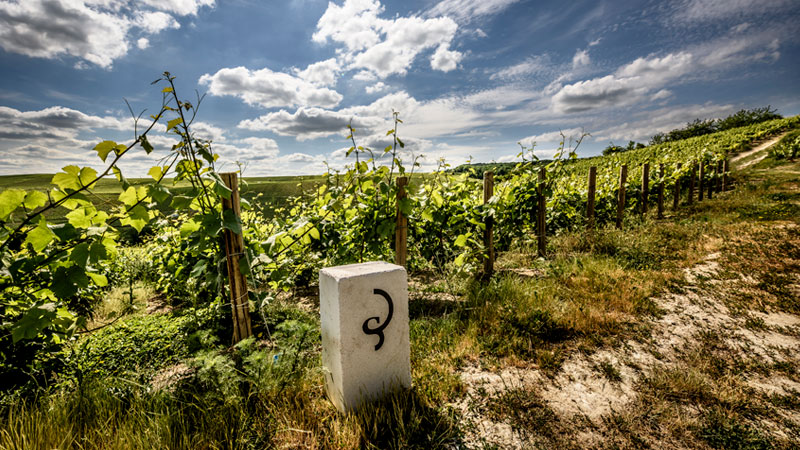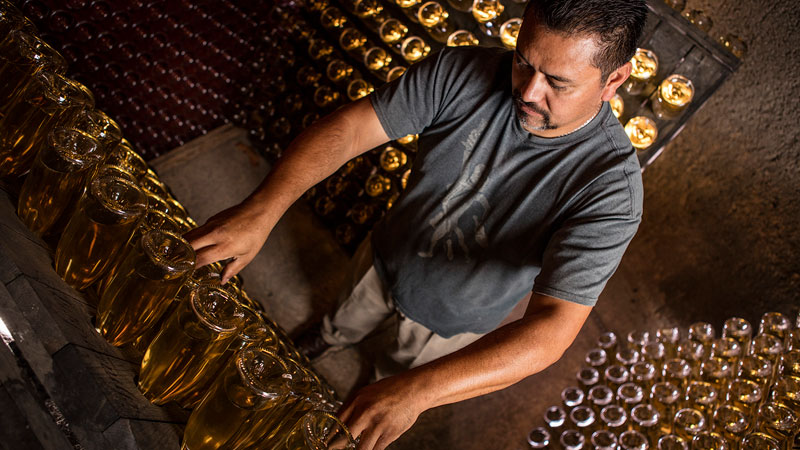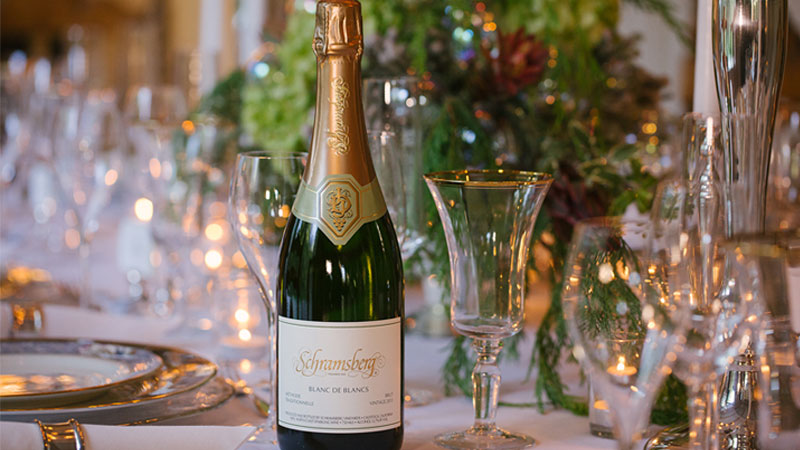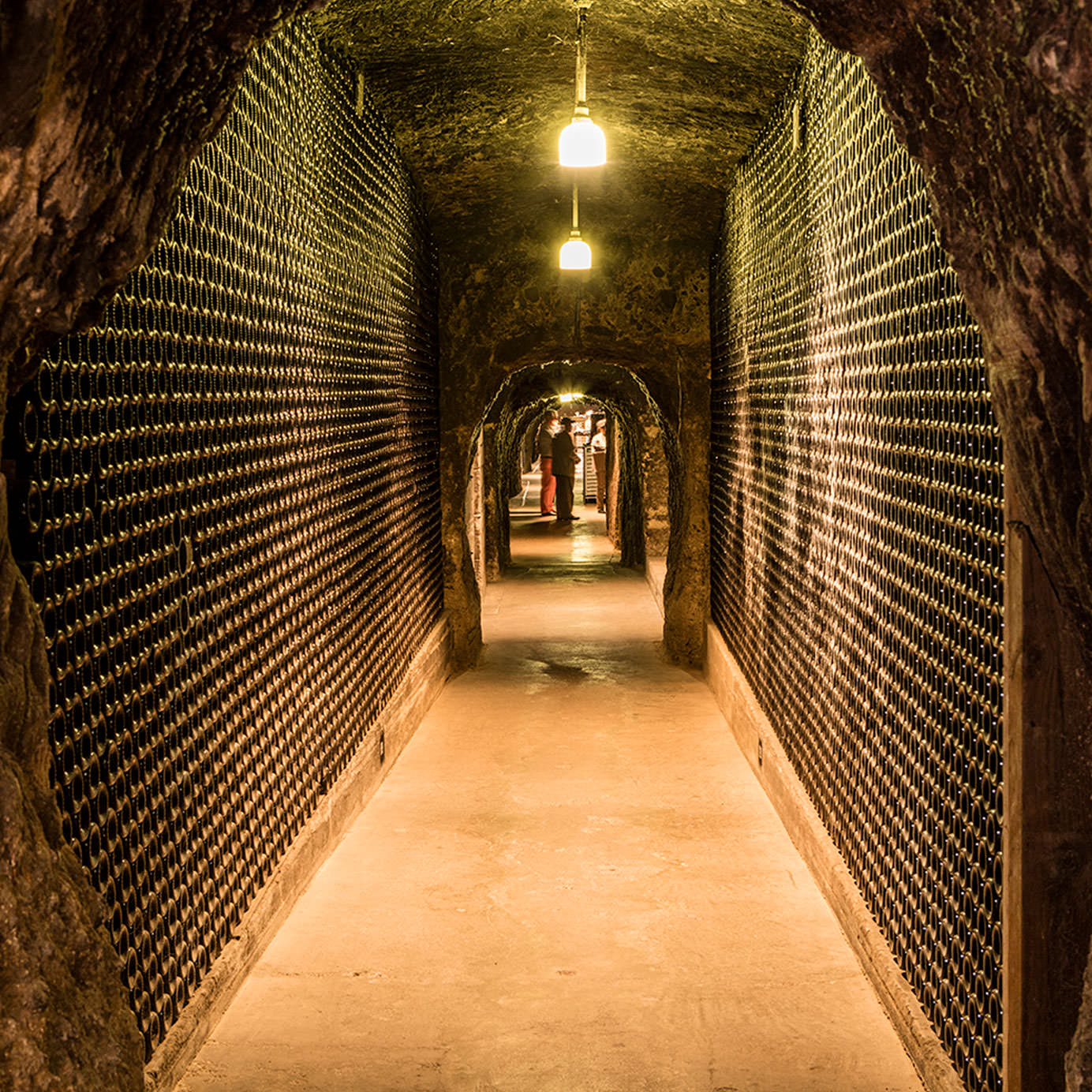In 2013, Cyril Brun, chef de caves at Champagne Charles Heidsieck, made a revolutionary decision. He put a non-vintage blanc de blancs in its cellar.
Made from 100 percent Chardonnay grapes, blanc de blancs are single-variety A.O.C. bubbles. They inspire fawning enthusiasm from soil obsessives, who believe each vintage expresses singular terroir and technique. Vintage blanc de blancs can easily fetch upwards of $500 a bottle.
Charles Heidsieck, a legendary, 1851 Champagne house, has released exactly five blanc de blancs vintages in 35 years. But Brun believes non-vintage blanc de blancs, or those made entirely from Chardonnay grapes from different harvests, are poised to outpace vintage varieties — if not the Champagne category as a whole.
“We are seeing a strong interest globally from both trade and consumers,” Brun says. Non-vintage iterations are now available at such esteemed Champagne houses as Billecart-Salmon, Ruinart, Louis Roederer, Henriot, Gosset, and Delamotte, plus grower Champagne producers like Pierre Peters.
There is major momentum behind a style that, just three years ago, Wall Street Journal columnist Lettie Teague says befuddled even the savviest Champagne drinkers. “My friends drink Champagne but think of their favorites strictly in terms of brands,” Teague writes. “Champagne, to to them, is one place, rather than a region with distinct styles and types of wine.”
Why might this niche of a niche be finding its audience now? Veiled in French nomenclature, blanc de blancs comprise such a small percentage of production that the Champagne Bureau currently doesn’t track them. Brun estimates they are less than 5 percent of the total Champagne output.
Non-vintage blanc de blancs are on the rise because they speak to how modern drinkers buy, drink, and think about bubbles. They are less expensive than their vintage brethren — and, Teague notes, at less than $50 a bottle, more affordable than grand cru Chablis — yet still revered as pinnacles of house style. They are special without being stodgy, and exceptional without being wildly expensive.
Vintage blanc de blancs might seem too precious to pair with anything but high expectations, but non-vintage blanc de blancs are excellent foils for everything from oysters and sashimi to fried chicken, spicy Middle Eastern fare, or southeast Asian dishes, somms say.
Most importantly, they offer a (comparatively) affordable way to geek out on Champagne.

*
Blanc de blancs is a French term that translates to “white from white,” meaning white wine derived from white grapes. The other two grapes allowed by the governing A.O.C. in Champagne are Pinot Noir and Pinot Meunier, both of which have a dark red color.
Blanc de blancs generally tend to have more fresh citrus, yellow and white fruit, and nutty flavors. Brun believes customers prefer lighter, fresher, Chardonnay sparkling wines over complex, Pinot Noir-heavy vintage bottlings.
“Many consumers are pleasantly surprised to discover that blanc de blancs encompasses a wide array of styles, from delicate and crisp to rich and full-bodied,” Peter Liem, sommelier and author of the compendium title “Champagne,” says.
Non-vintage blends age for 15 months in the bottle and are usually lighter and less complex than vintages, which are aged for three years in the bottle. The style itself has almost a century of history in the region, originally produced in 1921 by the founder of Salon.
Thanks to their relatively gentle price tags and flavor profiles, blanc de blancs are accessible to those eager to learn about Champagne. Non-vintage blanc de blancs typically retail below $100 for a 750-milliliter bottle, while vintage selections from legendary producers can fetch hundreds.
Charles Heidsieck Blanc des Millénaires 2004, for example, is $250. Salon’s 2007 Blanc de Blancs Brut Champagne will put you back $524.95 at California’s K&L Wine Merchants, and Krug’s 2003 Clos du Mesnil currently retails for a whopping $987.97 at New York City’s Astor Wines & Spirits.

“The demand is such that we are frequently out of stock of our blanc de blancs non-vintage,” Mathieu Roland-Billecart, COO of Champagne Billecart-Salmon, says. “It’s encouraging that consumers are exploring the breadth and depth of what Champagne has to offer.”
Matthew Levy, marketing manager at Schramsberg Vineyards, a historic Napa Valley winery, believes that only a small percentage of wine lovers have yet to learn the various naming conventions for sparking wine, but when presented with an opportunity to broaden their knowledge, they jump.
“The term is French, and sometimes foreign languages intimidate people,” Levy says. “Once you explain what blanc de blancs and blanc de noirs mean, people easily get why they might like one style over the other.”
“Frankly, only a small fraction of consumers directly relate ‘blanc de blancs’ wording to the white grape, Chardonnay,” Brun says.
The naming convention itself is democratic. While a sparkling wine cannot be called Champagne unless it hails from the demarcated French area, wines made with 100 percent Chardonnay from any region can be called “blanc de blancs.” Napa’s Schramsberg Vineyards, for example, has been making vintage blanc de blancs annually since 1965.
“People acquire greater familiarity with the terms,” Rotari winemaker Lucio Matricardi says, and that “helps them discover blanc de blancs and the expressions of Chardonnay in different environmental contexts.” Italy’s Rotari has been making sparkling wine using the traditional Champagne method for some 40 years. Its 2013 vintage blanc de blancs is available from $19.99.
*
Liem expects to see the number of blanc de blancs cuvées increase, as does Matricardi, who believes that consumers are looking for “territorial products that bear history and tradition.”
They face considerable opponents. The rosé category is exploding, in both still and sparkling iterations, and Pinot Noir is still the most widely planted grape in Champagne.
“We’ll see probably 10 percent more volume at best,” Brun says of blanc de blancs Champagne in the coming few years. “The production of Chardonnay in Champagne is not boundary free.”
In the meantime, he says, the launch of Charles Heidsieck’s non-vintage bottling has been a huge success. “The community of Champagne fans around the world — professionals from the trade and also private consumers — are advocating more and more their passion,” he says. Popping bottles never felt so revelatory.

6 Non-Vintage Blanc de Blancs to Try
Champagne Charles Heidsieck Blanc de Blancs
One-fourth of every bottle includes reserve wines with an average age of five years, making this blanc de blancs Champagne a true delight. White peach and honeysuckle aromas give way to a surprisingly fresh wine with hints of salinity and smooth effervescence. Average price: $96.
Champagne Ruinart Blanc de Blancs
This 100 percent Chardonnay-based Champagne sources grapes from mostly premier cru vineyards in the Côte des Blancs and Montagne de Reims, resulting in intensely aromatic, refreshing wine. You’ll find notes of peach and pear along with grapefruit and pineapple on the palate, plus sweet and spicy aromas. Average price: $80.
Mumm Napa Blanc de Blancs
A perfect match with oysters, this blanc de blancs is a blend of 90 percent Chardonnay with a top off of Pinot Gris from Napa Valley. Low dosage brings crisp acidity to the palate to complement the citrus, apple, and peach flavors. Average price: $22.
Pierre Peters Cuvée de Réserve Blanc de Blancs
This rich grower Champagne offers classic aromas of nuts and brioche, followed by melon flavors and notes of toast. Its creamy texture still offers a refreshing acidity, and its long finish is just subtle enough to not overpower the palate. Average price: $63.
Champagne Billecart-Salmon Brut Blanc de Blancs
With grapes from grand cru villages in the Côte des Blancs, this rich wine has floral aromas with lush peach flavors and a chalky, mineral-driven finish. Anywhere from 33 to 40 percent of the non-vintage Champagne includes reserve wines, which you can taste in its balanced complexity. Average price: $80.
Anna Codorniu Blanc de Blancs Reserva Cava
This creamy cava pairs with everything from starters to desserts, thanks to its crowd-pleasing tropical fruit flavors and long finish. Hailing from Spain, the blanc de blancs is a blend of 70 percent Chardonnay with three indigenous Iberian grapes: Parellada, Macabeo, and Xarel-lo. Average price: $13.
